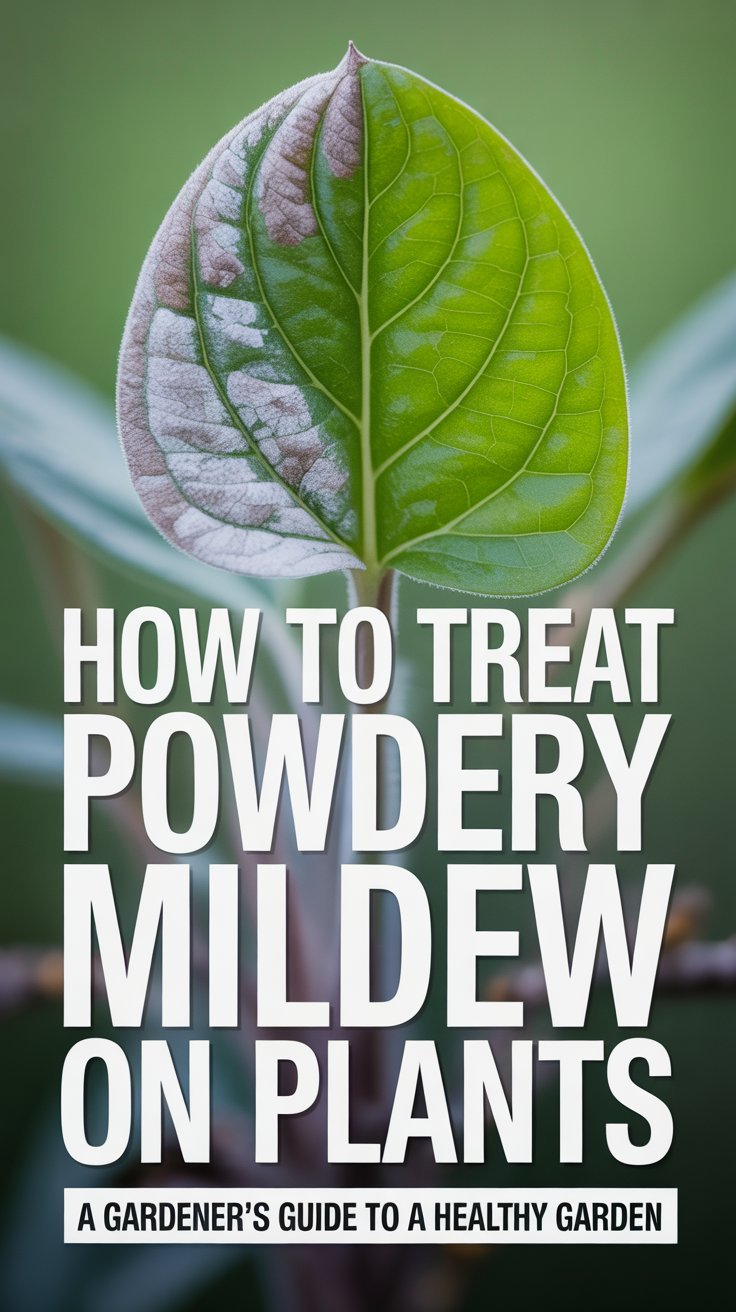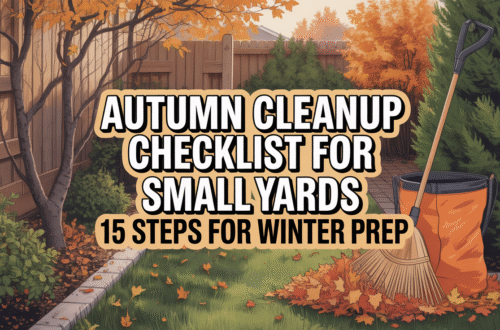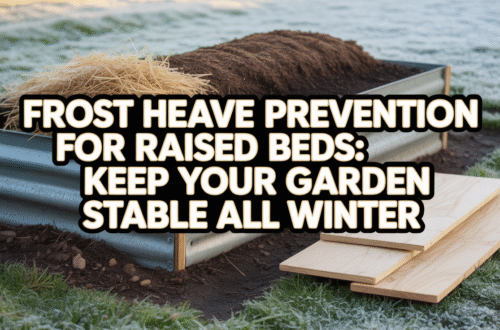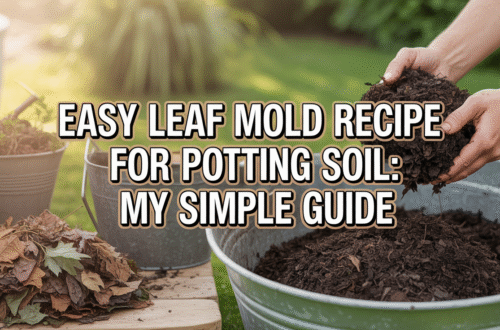Discover how to treat powdery mildew on plants with natural remedies, prevention tips, and expert advice from a 10-year gardener. Save your garden today!
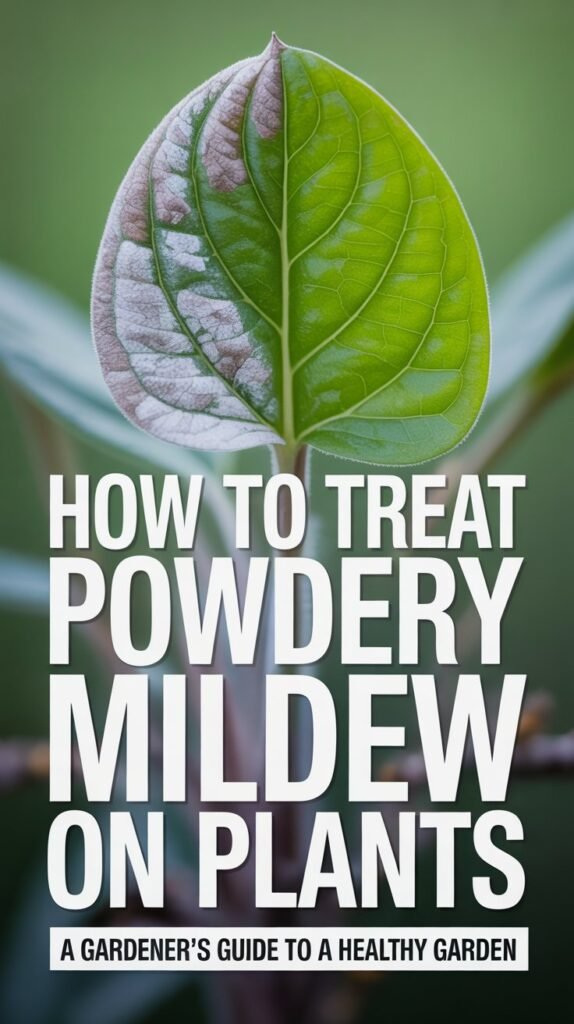
Hey there, fellow gardeners! If you’ve ever spotted those annoying white, powdery patches on your plants, you’re likely dealing with powdery mildew. Trust me, I’ve been there—over my 10 years of gardening, I’ve fought this fungal foe more times than I’d like to admit. Whether it’s creeping up on my roses or sneaking into my veggie patch, I’ve learned a thing or two about how to treat powdery mildew on plants.
So, what’s the big deal? Powdery mildew isn’t just an eyesore—it can weaken your plants, cut down your harvest, and even kill them if you ignore it. But don’t worry, I’m here to share my battle-tested tips to stop it in its tracks and keep it from coming back. In this guide, we’ll cover what causes it, how to spot it, and the best ways to treat it—naturally or otherwise. Let’s dive in and save your garden together!
What is Powdery Mildew?

Powdery mildew is a fungal disease that shows up as white or grayish powder on your plants’ leaves, stems, and sometimes even flowers or fruits. It’s caused by sneaky fungi like Erysiphe or Podosphaera, and it loves warm, dry days with humid nights—pretty common weather in many parts of the USA. It’s not picky either; it’ll hit your indoor plants, strawberries, tomatoes, or zucchinis without a second thought.
Why Should You Care?
Here’s why treating powdery mildew matters: if you let it run wild, it can block sunlight from your plants (goodbye, photosynthesis!), make leaves drop early, and shrink your fruit or flower haul. I once lost half my cucumber crop to it because I didn’t act fast enough—lesson learned! Knowing how to treat powdery mildew on plants can save your garden and your sanity.
Causes and Symptoms: What’s Behind the White Stuff?
What Causes Powdery Mildew on Plants?
This fungus thrives in specific conditions:
- High humidity: Think warm days and cool, damp nights.
- Poor airflow: Crowded plants trap moisture and spores.
- Warm temps: It loves 60-80°F (15-27°C).
- Dry leaves: Unlike other fungi, it doesn’t need wet foliage to spread.
The spores float through the air, so it can pop up out of nowhere if the conditions are right.
How to Spot Powdery Mildew
Look out for these signs:
- White or grayish powdery spots (like someone dusted flour on your plants).
- Leaves curling, yellowing, or dropping.
- Stunted or twisted growth.
If you see this, act fast! Want to dig deeper into plant diseases? Check out my post on Reduce Your Garden’s Carbon Footprint: Eco-Friendly Gardening Tips.
Prevention: Stop Powdery Mildew Before It Starts
I’m a big believer in prevention—it’s way easier than scrambling to fix a full-blown outbreak. Here’s how I keep powdery mildew away:
1. Pick the Right Plants
Some varieties are tougher against powdery mildew. For example, I’ve had luck with ‘Marketmore 76’ cucumbers—they’re bred to resist it. Check seed packets or nursery tags for resistant options.
2. Give Plants Breathing Room
Crowded plants are a mildew magnet. Space them out—I learned this the hard way when my zucchinis got too cozy. Prune ornamentals and thin veggie rows to boost airflow.
3. Water Smart
Water the soil, not the leaves, and do it in the morning. Wet leaves don’t cause powdery mildew, but soggy conditions can make other problems worse. Dry plants are happy plants!
4. Keep Things Clean
Snip off infected bits and toss them in the trash—not the compost. Those spores are sneaky and can linger. I also wipe down my tools with rubbing alcohol after dealing with sick plants.
5. Spray Ahead of Time
If mildew’s a regular visitor, use a preventive spray. I’ll share some natural options later that work like a charm.
For more garden care tips, head over to The Old Farmer’s Almanac.
Treatment: How to Treat Powdery Mildew on Plants
Caught it too late? No stress—here’s how to fight back with both chemical and natural fixes.
Chemical Treatments
For a bad case, fungicides can save the day. Here are some I’ve used:
- Sulfur: An old-school option that works well.
- Potassium Bicarbonate: Messes with the fungus without hurting plants.
- Triazole Fungicides: Great for protecting new growth.
** Heads-up**: Spray on a cool, cloudy day to avoid scorching your plants, and follow the label.
Natural and Organic Treatments
I lean toward natural fixes—they’re gentler and just as effective. Try these:
Baking Soda Spray
This is my go-to. It makes the plant surface too alkaline for mildew to survive. Mix:
- 1 tablespoon baking soda
- 1 teaspoon liquid soap
- 1 gallon of water
Spray every week or so. I’ve saved my roses with this more times than I can count!
Milk Spray
Sounds weird, right? But milk’s antifungal powers are legit. Mix 1 part milk with 2 parts water and spray weekly. It’s worked wonders on my strawberries.
Neem Oil
Neem oil is a double whammy—it fights fungus and pests. Dilute it per the bottle and spray every 7-14 days. Learn more about it from Cornell University.
Home Remedies
Short on supplies? These quick fixes can help:
- Vinegar Spray: 2-3 tablespoons of apple cider vinegar in a gallon of water. Go easy—it can burn leaves.
- Garlic Spray: Blend 2 garlic bulbs with a quart of water, strain, and spray. Smelly but effective!
Test first: These can be strong, so try a small spot before going all in.
Plant-Specific Fixes: Tailored Tips
Different plants need different care. Here’s how I tackle powdery mildew on some favorites:
How to Treat Powdery Mildew on Indoor Plants
Indoor plants get stuffy, so:
- Move infected ones away from others.
- Set up a small fan for airflow.
- Hit them with a baking soda spray.
More indoor tips? See my indoor gardening guide.
How to Treat Powdery Mildew on Strawberry Plants
Strawberries hate humidity. I:
- Trim leaves for better air.
- Use a milk spray weekly.
- Keep water off the foliage.
How to Treat Powdery Mildew on Tomato Plants
Tomatoes are tricky in late summer. I:
- Snip off bad leaves ASAP.
- Spray with sulfur or baking soda.
- Space them out next time!
How to Treat Powdery Mildew on Cucumber Plants
Cucumbers are mildew magnets. My fix:
- Plant resistant types like ‘Marketmore 76.’
- Use neem oil early.
- Water at the base.
How to Treat Powdery Mildew on Zucchini Plants
Zucchinis need TLC:
- Spray with milk weekly.
- Cut away bad leaves.
- Use a fungicide for big outbreaks.
How to Treat Powdery Mildew on Chili Plants
Chilis in humid spots? I:
- Space them well.
- Try a garlic spray.
- Watch like a hawk.
Need more plant advice? Visit USA GARDEN HUB.
FAQ: Your Powdery Mildew Questions Answered
Got questions? I’ve got answers:
- What is powdery mildew?
A fungal disease that looks like white powder on plants. - What causes powdery mildew on plants?
High humidity, poor airflow, and warm temps. - What kills powdery mildew instantly?
Nothing kills it instantly, but fungicides like sulfur work fast. - Can powdery mildew kill plants?
Yes, if untreated, it can weaken and kill them. - Is powdery mildew harmful to humans?
Nope, but it can make edibles less tasty. - How to treat powdery mildew on plants naturally?
Use baking soda, milk, or neem oil sprays. - How to treat powdery mildew on plants with baking soda?
Mix 1 tbsp baking soda, 1 tsp soap, and 1 gal water—spray weekly. - Best fungicide for powdery mildew?
Sulfur or potassium bicarbonate are top picks.
Check out UCANR’s guide for more details.
Wrapping Up
Powdery mildew doesn’t have to spell doom for your garden. With a little know-how—spotting it early, preventing it, and treating it right—you can keep your plants happy. I’ve turned my mildew messes into success stories, and you can too. So grab your spray bottle, check your plants, and let’s kick this fungus to the curb!
Happy gardening,
Ashley

